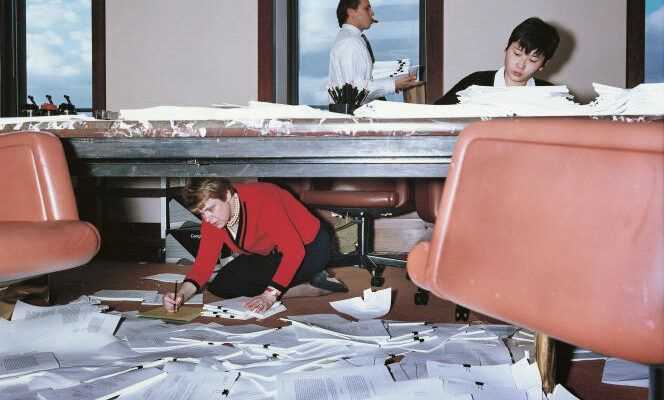TO back to school, we’re not going to stop bumping into each other. In any case, this is what the architects responsible for the reorganization of the offices would like. Company management asked them two questions: how many square meters can we gain in company headquarters with the regularization of teleworking? What encourages innovation among employees?
In each case, it goes through tightening a little more, which, paradoxically, does not go in the direction of the health recommendations. At PayPal, we gave up a floor. At Kiabi, to extension projects. But by bringing about shrinking offices and pooling workstations, the epidemic may succeed in giving birth to the Grail of architects for years: creative collisions.
In search of what we are not looking for
“In one day at the office, 75 % of information is captured informally ”, recalls Alexandra Corric, founding president of Archimage. In Walter Isaacson’s biography of Steve Jobs (Lattès, 2011), John Lasseter, his partner at Pixar, describes the layout of their offices. If a building doesn’t encourage unplanned encounters, Jobs reportedly told him, “You will lose a lot of innovations and the magical spark of serendipity”, this art of discovering what you are not looking for.
Pixar was therefore designed so that people needed to pass through the central atrium, where cafes and meeting rooms were set up. “Jobs went so far as to decree that there would only be two toilets in the building, for each gender, connected to the atrium, Lasseter says. (…) It worked, I kept bumping into people I hadn’t seen in months. ”
If the idea is regularly attributed to Steve Jobs, like all those that we want to associate with a patented visionary, for more than half a century architects and anthropologists have sought to theorize the conditions of the fortuitous and creative encounter. As early as 1950, Mervin Kelly, CEO of Bell Labs, explained that if his company had been able to invent the transistor and a thousand other things, it was because everyone, chemists, mathematicians, engineers, worked under the same roof. The hallways of the Murray Hill building in New Jersey were long enough that on the way to the canteen you were sure to run into colleagues with whom you would invent the photovoltaic cell or whatever is invented in going to the canteen.
You have 61.9% of this article to read. The rest is for subscribers only.
